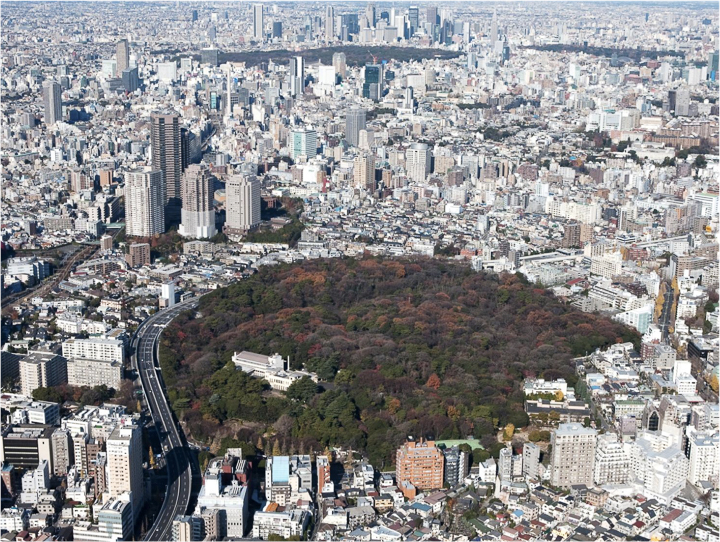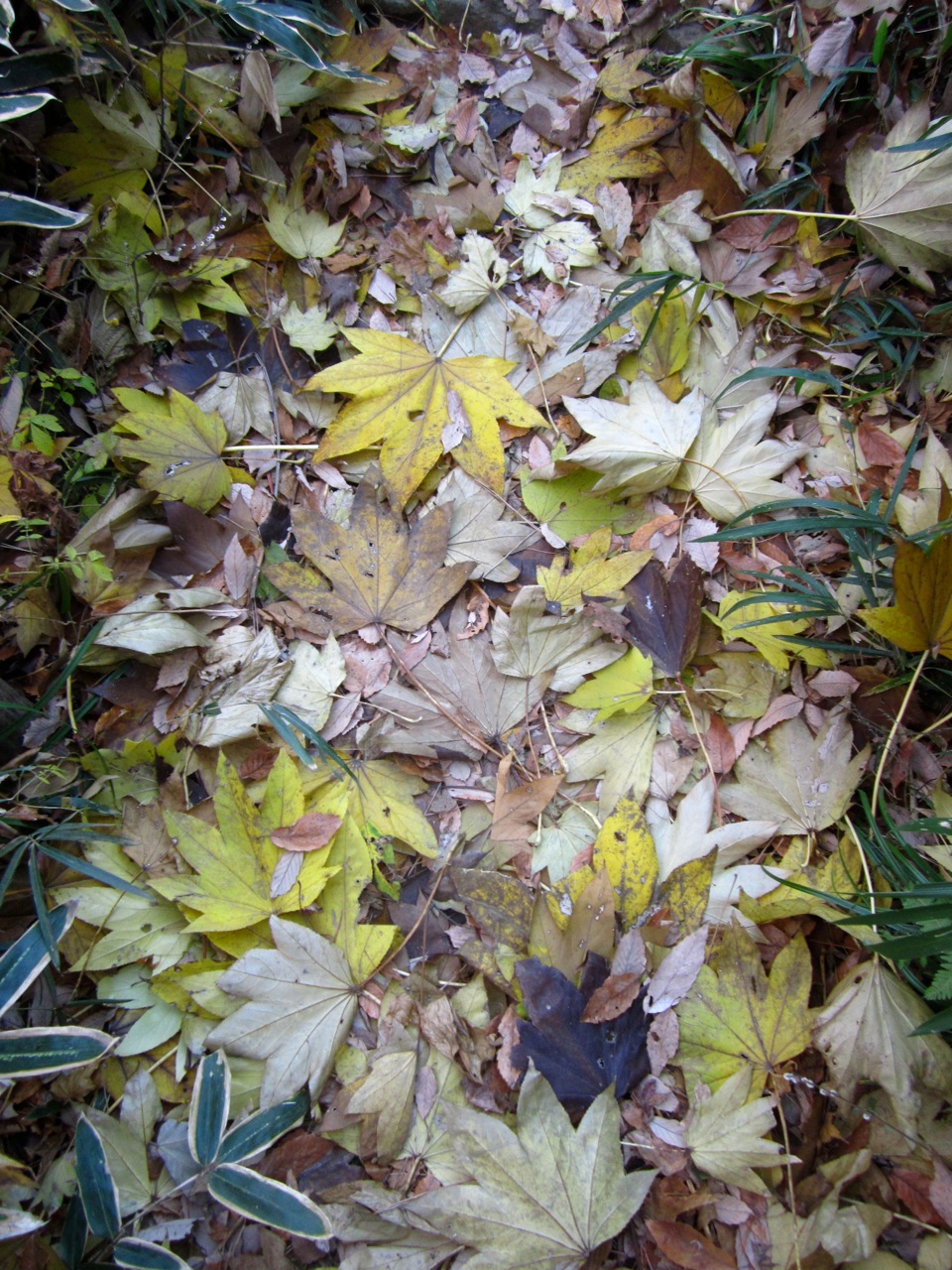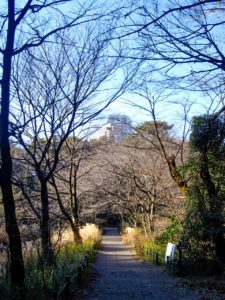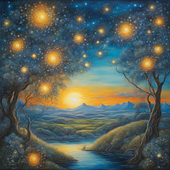
Tokyo’s Wilderness Within
Travel Essay
What did the natural landscapes of our cities originally look like? In a sprawling metropolis like Tokyo, with concrete encrusting almost every inch of earth, walling every riverbank, and towering up to the skies, it’s almost impossible to imagine.
Thankfully, the Institute for Nature Study in the heart of Tokyo maintains a fragment of an old ecosystem to stimulate our imagination in this regard. There, just a short walk from Meguro Station, one finds a 200,000 square meter patch of forest and wetland very much unlike a typical urban park.
Take a few steps inside on a winter’s day, following a path that cuts through thick bush, and the endless swaths of skyscraper simply disappear. Almost instantly, one is immersed in a vital, breathing wilderness, replete with lush evergreens, ponds, fallen trunks, marshes, exposed roots, insects, eerie bird calls, mysterious rustles behind veils of criss-crossing branches, and dark earth carpeted in a mosaic of fallen leaves.

In fact, the habitats here are so well preserved that the institute has served as an ecological research site for more than 60 years.
Shinsuke Hagiwara, 65, is a recently retired specialist in plant ecology who spent almost four decades at the institute studying, managing, and teaching about its natural systems.
“Here we let nature take its course,” he says “In other green spaces in central Tokyo, human beings tamper with the ecologies, but this place has been preserved from time immemorial with minimal interference.”
Parks in central Tokyo of comparable size — such as Rikugien and Shinjuku Gyoen — have all at one point been cleared of brush to plant grass, layered in concrete, razed to the ground in wartime U.S. bombing, or otherwise severely impacted by human hands. Yet the ecosystems of the institute have remained relatively intact, even in spite of Japan’s rampant industrialization over the last 135 years.
The land is first mentioned in records circa 1559 as belonging to a certain Lord Shirogane, about whom little is known. By 1664 ownership had passed to Zojoji, the Great Main Temple of the Chinzai sect of the Shingon School of Buddhism, before being incorporated into the estate of a daimyo named Yoshige Matsudaira.
Then, in 1871, it was nationalized by the modernizing Meiji government for use by the military. Since the site was used mainly gunpowder storage, no landscaping was required, and it was spared the tree-clearing that befell many other military grounds similarly appropriated from daimyo.
In 1917, the land came under the stewardship of the Emperor, acquiring the name Shirogane Goryochi, and in 1949, it was finally opened to the public as the Institute for Nature Study. At this time, the national government assigned it the designation of a “natural treasure” — meaning all logging, brush-cutting, plant-trimming and other tampering were forbidden.
As a result of this distinctive history, the ecologies on the institute’s grounds, while not entirely untouched, have retained unbroken continuity with organisms of the past.
“It might seem messy, but we want people to see that there is real nature even in the middle of Tokyo — rotting trees and all,” said Hagiwara. “Humans think they are superior to nature and can shape it into whatever they please, as they do at other gardens in the city. But in reality, nature is far more ingenuous than us; we are clueless how to deal with all our garbage, but nature keeps on recycling its own waste without any assistance. Rotting trees are eaten by bacteria and insects to become soil, which in turn becomes nutrients for plants. In this way, nature has maintained its own life cycle for aeons. This is what the institute teaches us.”
Now home to more than 1,400 kinds of plant, 236 kinds of tree, 2,800 kinds of insect, 13 kinds of fish, 12 kinds of mammal, and 20 kinds of amphibian, the institute can certainly lay claim to an astonishing level of biodiversity for a mere sliver of urban core.
In fact, several species of flower can be found nowhere else in Tokyo, such as willow-leafed magnolia (tamushiba), anemone keiskeana (yukiwarichige), and a kind of mint called Premna japonica (hamakusagi). A few, including Veronicastrum axillare (torano-osuzukake) and several varieties of orchid, are even endangered.
Since government environmental regulations took effect after WWII, trees at least 10 cm in diameter have multiplied more than fivefold, while some invasive species, such as the Western dandelion, have gone into decline, deprived of light by the thickening canopy.
Given that ecological systems are in constant interaction with their environment, the walls around the compound cannot fully protect the interior from the encompassing metropolis. For example, car exhaust fumes culled many Japanese red pines when air pollution peaked in the 1960s.
Global warming has also left its mark. Not only have leaves begun to change some two weeks later in the fall, just as flowers are blooming earlier in spring, but palm trees have proliferated ever since seeds were winged into the reserve by brown-eared bulbuls, also in the 60s. Previously, seedlings would perish on cold winter nights. But with an increase of 5 degrees to the low for January over the last century, the temperature at which soil freezes — just below minus 4 degrees — is no longer reached, and young palms can now survive to maturity.
Meanwhile, the institute seems to exert its own influence on the surrounding city. In climate discourse, it’s not unusual to hear the term “heat island,” referring to an isolated area that accumulates and traps heat more than its surroundings. But Hagiwara claims that the institute has the opposite effect.
“This place is a ‘cool island’ because it has a lower temperature than the city around it,” he says. “As a result, cool air drifts downwind from here toward lower elevations at nighttime, and people living nearby say their air-conditioning costs are half those of friends in similar properties further away.”
So can a visit to the Institute for Nature Study help us imagine what the natural landscape of Tokyo originally looked like? Having sustained an unsevered link with ecosystems of the past, it very while might, but how far the preserve takes our minds is difficult to say, considering its many permutations over time.
In the last Ice Age, which ended around 12,000 B.C., the forests of this region were comprised of subarctic conifers; when temperatures rose afterward, broad-leaf deciduous forests took their place. Then Yayoi settlers arrived from mainland Asia, and cleared much of the tree cover, leaving a relatively bare plain that came to be known as Musashino.
It wasn’t until the Edo Period (1603-1867 CE), when the shoguns ordered the planting of trees and forbade logging, that the region was finally re-greened. Hence the ancient trees found on the institute’s grounds, two of which have nicknames: Story Pine (Monogatari-no-matsu) and Great Snake Pine (Orochi-no-matsu).
The once-ubiquitous pines have now been diminished by pollution, and palms, which never grew wild in the region, are on the rise. In short, there does not seem to have ever been any stable state of “aboriginal” nature to imagine in the first place.
Nonetheless, the Institute may help us imagine something else.
“If you knocked down the buildings and didn’t interfere for 200 years, something resembling this place would appear,” says Hagiwara. “It’s actually better not to plant trees because that can disrupt the unfolding of nature. First grass sprouts up, then weeds, then brush. That sequence helps the ecology to mature.”
So not only does the Institute provide a way to trace backward into Tokyo’s ecological past, perhaps it also offers a glimpse of what the metropolis might become without us in due course.

Adapted from an essay that originally appeared in the Japan Times
 Eli K.P. William is the author of The Jubilee Cycle trilogy (Skyhorse Publishing), a science fiction trilogy set in a dystopian future Tokyo. He also translates Japanese literature, including the bestselling novel A Man (Crossing) by Keiichiro Hirano, and serves as a writing consultant for a well-known Japanese video game company. His translations, essays, and short stories have appeared in such publications as Granta, The Southern Review, Monkey, and The Malahat Review.
Eli K.P. William is the author of The Jubilee Cycle trilogy (Skyhorse Publishing), a science fiction trilogy set in a dystopian future Tokyo. He also translates Japanese literature, including the bestselling novel A Man (Crossing) by Keiichiro Hirano, and serves as a writing consultant for a well-known Japanese video game company. His translations, essays, and short stories have appeared in such publications as Granta, The Southern Review, Monkey, and The Malahat Review.
More about Eli here.
Follow him on BlueSKy: @elikpwilliam
Or for more essays like this, JOIN ELI’S NEWSLETTER
ALMOST REAL
essays on futurism, philosophy,
speculative fiction, and Japan
by Eli K.P. William
